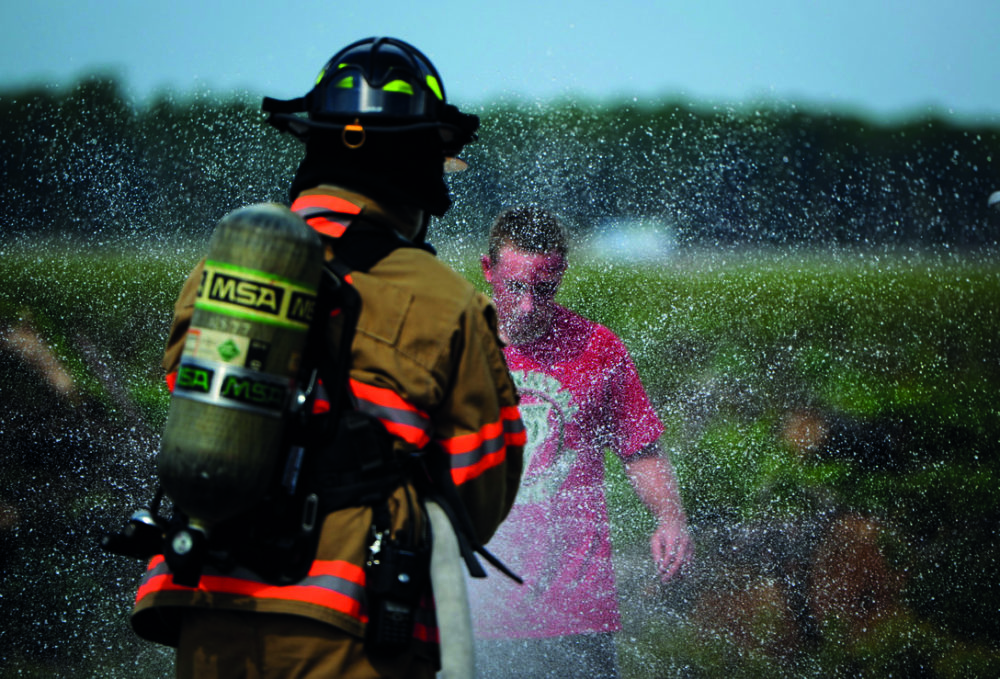

Explosive effects include incendiary effects which occur near the explosion. These low-order explosives, while still potentially deadly, lack the over pressurization and do not present with primary blast wave injuries. Low-order explosives undergo degradation and lack the blast wave and include gunpowder, fireworks, and pyrotechnics. High-order explosives include TNT, dynamite, and C4. High-order explosives undergo detonation and cause high-pressure blast waves which cause the primary blast injuries. Explosive WeaponsĮxplosive weapons come in two general categories. Universal precautions used for typical infection control processes are sufficient to protect health care workers from radioactive material. The Health Physics Society consensus statement supports this noting that it would be unlikely for an improvised explosive device with a radiologic component to disperse sufficient radioactive material to pose an immediate health hazard to first responders. All first responders should don appropriate PPE (gloves, respiratory protection) but should not delay lifesaving treatment due to concern for contamination. Radiation itself is not an immediate emergency. It is important to remember that radiologic contamination does NOT change your treatment priorities. Contamination may be external or internal depending on the material being swallowed, absorbed, or entering wounds in the skin. Time refers to how long the victim was exposed to the source distance is how far away the victim was from the source, and shielding is what PPE or other barriers were in place to lessen the radiation burden to the victim.Exposure refers to how close the victim was to the source of radiation, whereas contamination is when the victim comes in physical contact with the radiation source and subsequently continues to be exposed and may expose others. Prevention of contamination can be summed up by remembering the three tenets of time, distance, and shielding. What is most important for the first responder is proper PPE, decontamination, and understanding the difference between exposure and contamination. Treatment is with tetracycline or doxycycline.Radiologic/Nuclear WeaponsRadiologic and nuclear weapons have been the subject of fear and controversy over the past decades. What makes this agent so dangerous is that it can persist on inanimate objects for months and only requires a single organism to cause infection. Q Fever (Coxiella Burnetti) manifests after a 10 to 40 day incubation period with undifferentiated fever, headache, fatigue, and myalgias. Differentiation of ricin poisoning and sepsis can be very difficult as both may present similarly.

This toxin in weaponized form would typically be inhaled or ingested leading to airway edema and necrosis or gastrointestinal hemorrhage followed by necrosis. Ricin is derived from the castor bean plant. They both cause multisystem organ failure following a flu-like illness as well as the characteristic hemorrhage. The most well-known and deadly on this list are the Filoviruses Ebola and Marburg. Viral hemorrhagic fevers are a family of viruses including Ebola, Marburg, Dengue, Hantavirus, Rift Valley Fever, Junin, Machupo, Guanarito, and Chapare. The ideal model of transmission is dependent on the individual properties of each agent. Route of dispersal can be through aerosolization, thermal detonation, contamination of water and food supply, and even human-to-human contact. In responding to a WMD incident, the responder must consider not only the agent in question, but also the route of dispersal as this can modify operations including personal protective equipment (PPE), a method of decontamination, and expectation to the number of possible victims. We will highlight key features in each of the categories. Weapons of mass destruction can be summarized by the acronym CBRNE, which stands for Chemical, Biological, Radiological, Nuclear, and Explosive. It is important to recognize patterns of symptomatology to first, protect yourself and second stabilize your patients. In your role as a pre-hospital care provider, it is unlikely that you will know the exact agent you will need to manage. The following article provides highlights of WMD and references the importance of personal protective equipment and decontamination. The topic of weapons of mass destruction (WMD) and related injuries is vast.


 0 kommentar(er)
0 kommentar(er)
